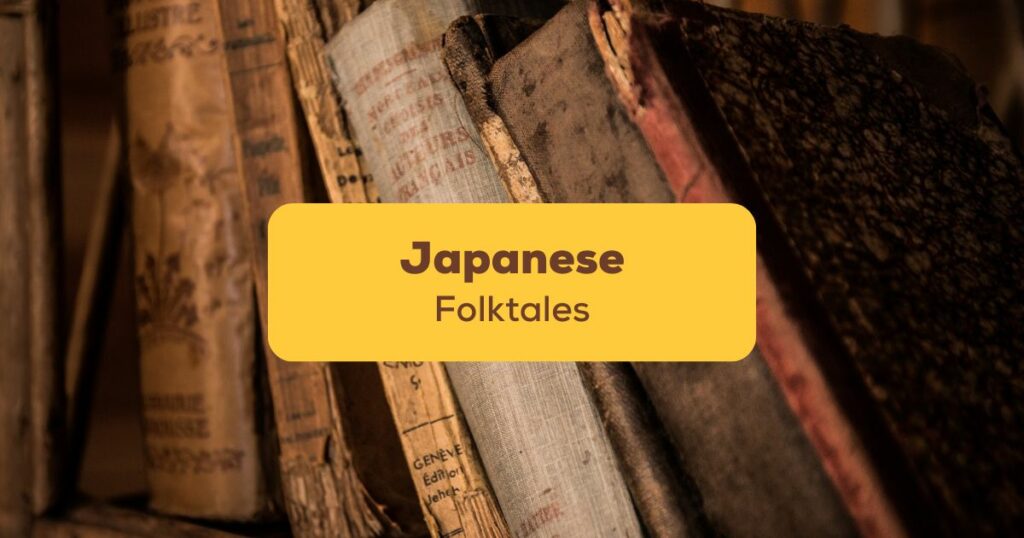Japanese folktales, or mukashi banashi, are full of whimsy and wonder. The name literally means “tales of long ago,” and these stories have, in fact, been delighting readers of all ages forever! Japanese folklore is a huge part of Japan’s heritage. By reading these stories, you can learn a lot about the kind of Japanese mythology that has been enchanting Japanese imaginations for centuries and passing stories down from generation to generation.
From stories about a lovable peach boy to a lonely girl and a brave warrior, Japanese stories are memorable and creative pieces of fiction that are incredibly unique to Japanese culture.
Now, let’s uncover some of the Japanese stories that paint a vivid world full of mysterious beings and mythical lands through richly imaginative popular tales.
Table Of Contents
Intriguing Japanese Folktales
Now, Let’s discover three of the most interesting Japanese Folktales in Japanese culture.
1. The Tongue-Cut Sparrow (舌切り雀)
Shita-kiri Suzume is a traditional Japanese fairy tale about a kind old man, his greedy wife, and an injured sparrow. The themes reflected in this story are jealousy, friendship, and how being selfish can affect relationships. Something really interesting is that Japanese folktales usually touch on life lessons one can use to reflect.
Here’s a quick summary of the story!
The story begins with a poor old woodcutter, someone incredibly kind and honest, and his greedy and nasty wife. The two lived alone, making their living by cutting wood and fishing. One day, the old man went out into the woods to cut timber and found an injured sparrow. The old man felt bad for the poor creature and took it home to nurse it back to health with the old couple’s scarce supply of rice. The wife didn’t like this one bit.
The old man eventually had to go off into the mountains for work and left the healing sparrow in the care of his wife, who had no intention of feeding it. She left it alone while she went out to fish. Upon returning, she discovered the hungry bird had gotten into starch. Angry, the wife cut out the sparrow’s tongue and shooed it off into the mountains from where it came.
In the mountains, the old man was alerted to a bamboo grove by the sparrow’s fellow brethren, where the community of sparrows lived. Thankful for the old man’s generosity, the sparrows presented the old man with a choice of two baskets—a small one and a large one—that he could take home as a present. He chose the smaller one, believing that it would be lighter to carry back home.
When the old man returned home, he opened his basket, and lo and behold! There was a huge treasure inside. The incredulous wife couldn’t believe the old man refused the larger basket, thinking it probably contained even more treasure, so she set off to claim her own basket of treasure from the sparrows in the bamboo grove. She greedily opened her basket on the journey home and was shocked to find snakes and monsters bursting out, scaring her to her death as she tumbled down the mountain.

2. The Crab And The Monkey (さるかに合戦)
The Crab and the Monkey or Monkey-Crab Battle (Saru Kani Gassen) is one of those Japanese myths that stick with you and teach you a lesson on justice and revenge. The story goes a little like this…
One day, a crab was out for a walk when it found a yummy-looking rice ball. A sly monkey wandered in and persuaded the crab into a trade: rice ball for a persimmon seed. At first, the crab believes she got the short end of the stick, but after a while of planting and tending to the persimmon seed, a bountiful tree bursting with ripe persimmon blossoms.
The sly monkey returns, telling the crab that it will climb the tree and pick fruit for the helpless crab. However, the monkey goes back on his word and gorges on persimmons for himself. The crab is outraged, and the monkey begins to attack the crab by hurtling hard, unripe fruit at it, provoking the pregnant crab to give birth just before she dies.
Way later, the crab’s offspring decide to seek revenge against the monkey for what it did to their mother. With the help of several crafty animal allies, they all work together for revenge to give the monkey a befitting treatment for his past horrible deeds.
3. The Flower-Blooming Old Man (花咲か爺さん)
Hanasaka Jiisan is one of the most popular tales from Japanese myths.
There was once an old, childless couple who loved their pet dog dearly. One day, the dog went digging in the garden and found a box of gold coins. A neighbor heard about this and, thinking the dog had the magical ability to find treasures, borrowed the dog for his own selfish reasons. When the neighbor unleashed the dog in his own garden, all the dog dug up were bones, so the neighbor killed the dog in a blind rage.
The neighbor returned to the old couple’s house and lied to them by saying the dog had suddenly dropped dead mysteriously. The poor old couple mourned the loss of their beloved dog and buried him under the fig tree in their garden where the dog had once found those golden coins.
One night, the dog’s master had a dream where the dog came to him and told him to chop down the fig tree and build a mortar out of it. The following day, the old man told his wife what had happened, and they did as they were advised to. The old couple put rice into the mortar, turning it into gold!
The neighbor returned, having heard about this fantastical mortar, but when he and his greedy wife added rice to the mortar, all they got in return were foul-smelling berries. Again, in anger, they destroyed the mortar.
That night, the dog’s spirit came to his master’s dreams once again and told him to sprinkle his ashes onto particular cherry trees. Once again, the masters did as the dog told them, and the cherry trees bloomed extravagantly. A passing daimyō (feudal lord) thought the trees were magnificent and showered the couple with gifts. When the neighbor tried to do the same, the ashes only blew into the daimyō’s eyes, and he was promptly thrown in jail.
These stories are fascinating, right!? If you want to check out a good place to start reading some Japanese folklore, check out this compilation of short stories that will surely tickle your fancy.

How Do You Say Folktale In Japanese?
The Japanese word for Folktale is 昔話 (Mukashi-banashi).
Reading Japanese literature is fun, but imagine how much gets lost in translation! Reading stories as they were originally written in the native language is a great way to truly connect with and understand the story as the author intended. Here’s a hot tip for you: learning about the urban legends of another country can certainly help you learn that country’s native language, so you could consider learning Japanese!
Folktale-Related Vocabulary In Japanese
Now, do you feel a little more at ease? Great! Let’s go over a list of useful words in Japanese that you may encounter while reading some of these awesome Japanese stories of adventures, battles, and magical kingdoms.
| English | Japanese | Romanization |
|---|---|---|
| Spirit | 幽霊 | Yūrei |
| Raccoon dog | たぬき | Tanuki |
| Scary | 怖い | Kowai |
| Castle | 城 | Shiro |
| Demon | 鬼 | Oni |
| Soul | 魂 | Tamashi |
| Princess/Prince | お姫様/王子 | Himesama/Ōjisama |
| Dragon | 竜 | Ryū |
| Tell me a story. | 話を聞かせてください。 | Hanashi wo kikasete kudasai. |
Frequently Asked Questions About Japanese Folktales
1. What Is The Oldest Japanese Folktale?
The oldest known Japanese folktale is thought to be Taketori Monogatari or The Tale of the Bamboo Cutter. This classic story is said to have first been written in the 10th century and printed on a scroll.
This famous prose fiction recounts the story of an infant baby girl inside a bamboo stem discovered by a bamboo cutter. Together, he and his wife raise the child as their daughter and into a beautiful young woman named Kaguyahime, who attracts suitors from all over Japan. To ward off her potential marriage suitors so she can live out her days in peace, Kaguyahime demands impossible tasks from them, all of whom fail miserably. She then gets away from the demanding presence of the princes on Earth by returning to her rightful home — the moon!
2. What Is The Most Famous Japanese Folktale?
The most famous Japanese folktale is arguably the story of Momotarō. This zany story is about a boy born from a peach, discovered by an old childless couple when they split the fruit open and then raised the boy as their own.
3. What Is Yokai In Japanese?
Yokai is an umbrella term for all kinds of supernatural and paranormal beings, such as ghosts, demons, monsters, and shapeshifters. Their common trait is that they can cross over into the human world and interact with humans, sparking creepy encounters. Just think—if it’s spooky, it can be called a yokai!
Improve Your Language Skills With Japanese Folktales
We’ve ventured into the magical worlds of sea kings and ghosts, magical kingdoms of royal princes and princesses, and even learned about children that grow out of fruits and vegetables. Japanese folktales sure are amazing, aren’t they? And without a doubt, immersing ourselves in these stories is an excellent way to exercise our Japanese reading comprehension and expand our vocabulary.



































































